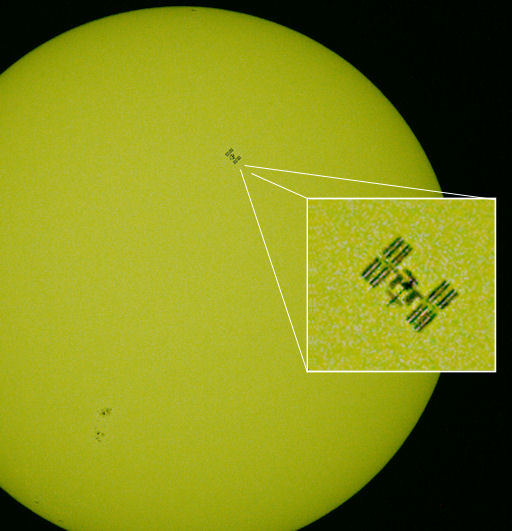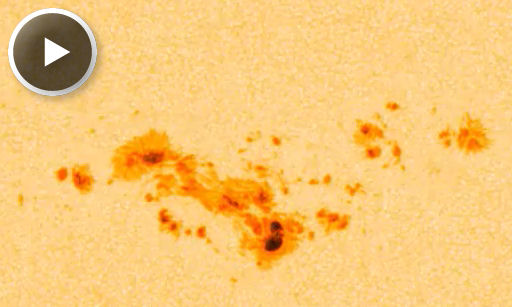Thirty-five new items have just been added to our Meteorite Jewelry collection. Browse the Space Weather Store for something out of this world. | | |
GEOMAGNETIC STORM WATCH: NOAA forecasters have downgraded the chances of a geomagnetic storm on Nov. 25th to 50% as an incoming CME takes longer to arrive than expected. The tardy cloud might yet spark auroras before the weekend is over. Aurora alerts: text, voice.
BREAK IN THE MONOTONY: With sunspot AR1618 in decay, solar activity was very low on Nov. 24th. The only break in the monotony was provided by a 500 ton winged spacecraft:

The International Space Station passed directly in front of the sun over Entre Rios, Argentina, where Leonardo Julio photographed the split-second flyby. "I traveled 250 km to be in the path of the transit," he says. "It occurred just as predicted by CalSky."
The sunspot near the bottom of Julio's picture is AR1618. Although the sunspot is in decay, its magnetic field still harbors energy for strong eruptions. NOAA forecasters estimate a 30% chance of M-class flares and a 5% chance of X-flares during the next 24 hours. Solar flare alerts: text, voice.
MUST-SEE SUNSPOT MOVIE: A sunspot, like AR1618, is a vast island of magnetism floating on the surface of the sun. Magnetic fields bubble up from the sun's interior to form the sunspot's dark cores much like a Pacific island forming from the lava of an undersea volcano. Phil Scherrer, a member of the Solar Dynamics Observatory science team at Stanford Unniversity, has prepared an 8-day movie showing the genesis of AR1618:

A companion movie shows the region's magnetic development. In the movie, which Scherrer made using data from SDO's Helioseismic and Magnetic Imager (HMI), white denotes positive polarity, black denotes negative. Places with mixed polarities are where the magnetic fields can reconnect and erupt, producing solar flares.
Realtime Space Weather Photo Gallery
Realtime Aurora Photo Gallery
Realtime Eclipse Photo Gallery
Realtime Noctilucent Cloud Photo Gallery
[previous years: 2003, 2004, 2005, 2006, 2007, 2008, 2009, 2011]
Potentially Hazardous Asteroids (
PHAs) are space rocks larger than approximately 100m that can come closer to Earth than 0.05 AU. None of the known PHAs is on a collision course with our planet, although astronomers are finding
new ones all the time.
On November 25, 2012 there were potentially hazardous asteroids.
Notes: LD means "Lunar Distance." 1 LD = 384,401 km, the distance between Earth and the Moon. 1 LD also equals 0.00256 AU. MAG is the visual magnitude of the asteroid on the date of closest approach. | | The official U.S. government space weather bureau |
| | The first place to look for information about sundogs, pillars, rainbows and related phenomena. |
| | Researchers call it a "Hubble for the sun." SDO is the most advanced solar observatory ever. |
| | 3D views of the sun from NASA's Solar and Terrestrial Relations Observatory |
| | Realtime and archival images of the Sun from SOHO. |
| | from the NOAA Space Environment Center |
| | the underlying science of space weather |

